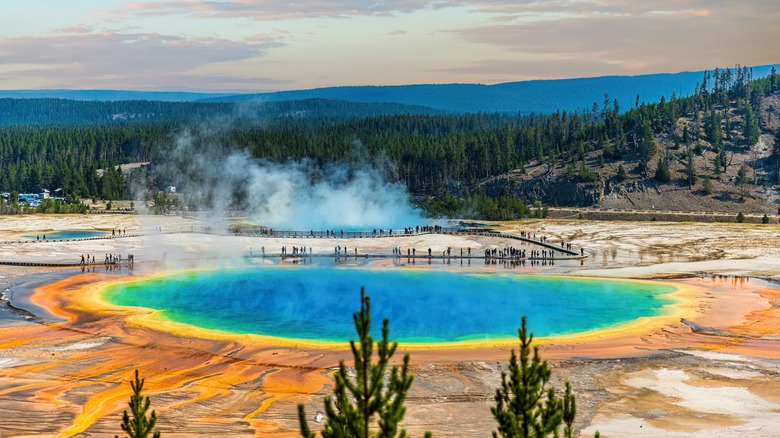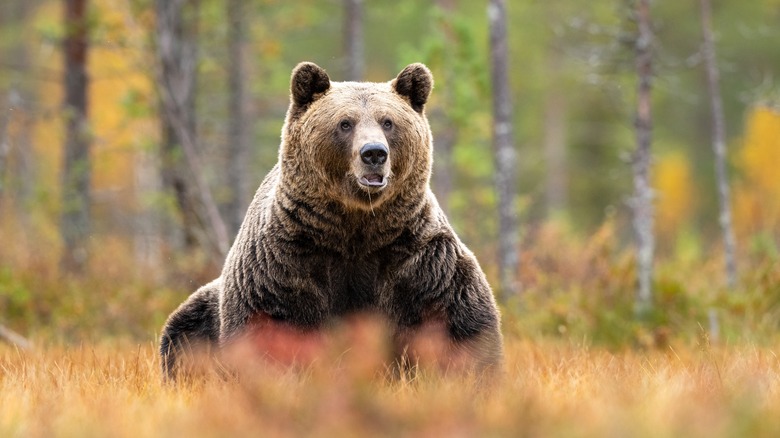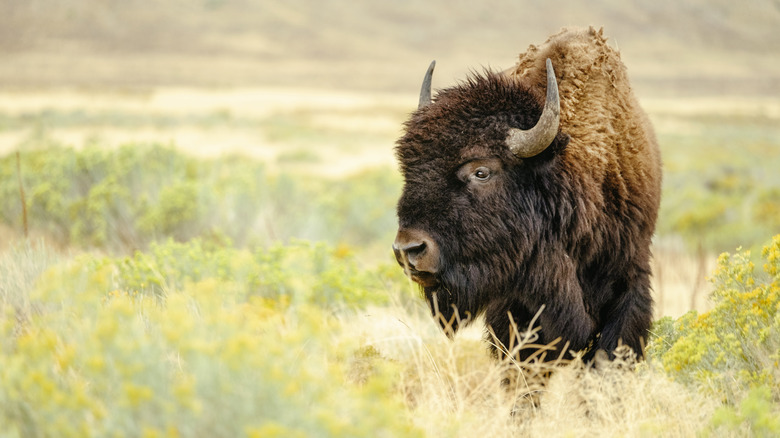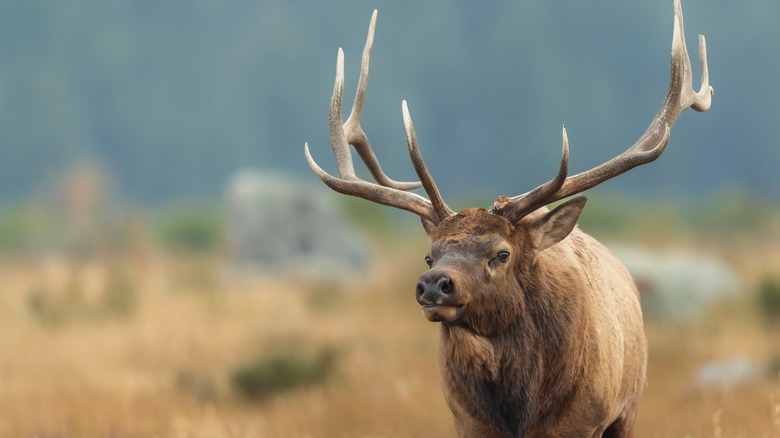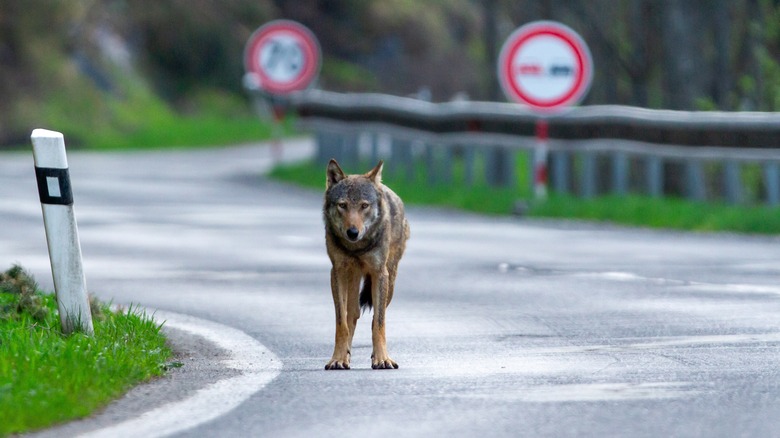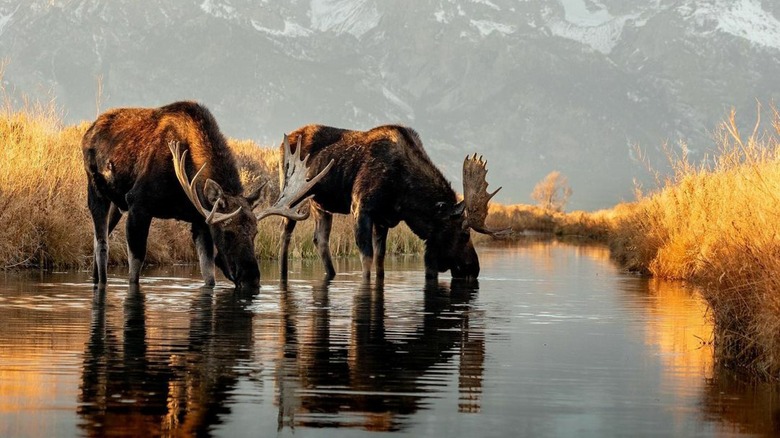5 Creatures To Beware Of When Adventuring In Yellowstone National Park
Yellowstone National Park is one of America's most iconic national treasures. Known for its geothermal wonders like Old Faithful and Grand Prismatic Spring, it offers visitors an otherworldly charm. Exploring Yellowstone means immersing oneself in a landscape where geysers erupt, hot springs bubble and colorful pools paint the earth with vibrant hues.
Yet, in nature, where there is beauty, there is danger. In the park lies a wilderness teeming with animals, each species playing a vital role in the park's delicate ecosystem. Among these majestic creatures are bison, elk, grizzly bears, and wolves, each adding their own unique essence to Yellowstone's wild tapestry. For visitors embracing the awe-inspiring beauty of the park, it is equally important to heed the dangers posed by its wildlife. By staying informed and respecting the park's natural inhabitants, visitors can ensure an enjoyable experience for all.
These are five creatures to beware of when adventuring in Yellowstone National Park.
Grizzly bears
Grizzly bears stand as one of Yellowstone National Park's most iconic and formidable symbols of the wild. While they inspire awe, they also pose dangers, especially when humans encroach upon their territory or behave inappropriately around them. Despite appearing docile from a distance, grizzlies can swiftly become aggressive if they feel threatened or surprised. In particular, grizzly bear mothers are fiercely protective of their young. As such, if you see a bear cub, it is best to avoid approaching, as its mother is likely lurking nearby. Encountering a mother grizzly with cubs can be extremely dangerous, as she may perceive you as a threat and preemptively act aggressively to defend her offspring.
Even when you are not exploring the park, your campsite may inadvertently attract bears. Grizzly bears have a highly developed sense of smell. Leaving food unattended or improperly stored can bring bears to campgrounds and picnic areas, increasing the risk of human-bear conflicts.
If you do encounter a bear, it is best not to approach it. Even more importantly, do not hurry away, as sudden motion may alarm the bear and reinforce that you are a threat. Instead, maintain a steady demeanor and slowly back off. If these measures fail and the bear does attack you, use bear spray to fend them off, or if they persist, remember the adage: "play dead." Most bear attacks aim to neutralize rather than kill, increasing the likelihood that you will survive and be able to seek medical attention afterward.
Bison
In the fall, bison herds roam through Yellowstone in preparation for the winter, transforming the park into a lively and stunning fall camping spot. With their rugged, shaggy mane and massive stature, bison exude a sense of grace and strength. When viewed against the backdrop of Yellowstone's sweeping vistas, bison evoke a sense of timeless majesty, embodying the spirit of untamed wilderness.
Despite their seemingly docile demeanor, bison are responsible for more injuries to visitors than other wild animals at Yellowstone National Park, according to the CDC. This may be because bison are unpredictable in their behaviors and are extremely territorial, but it may also partly be because the visitors involved in these incidents failed to follow safety guidelines laid out by the park.
Thankfully, sidestepping such a harrowing encounter with a bison is straightforward. By adhering to the park's safety guidelines, which recommend maintaining a distance of 75 feet, you can steer clear of potential attacks and enjoy a danger-free escapade to Yellowstone.
Elk
Elk viewing is one of Yellowstone's primary attractions, making this national park one of America's bucket list destinations for nature enthusiasts. During the fall rutting season, male elk, known as bulls, vie for dominance and the chance to mate with females. Bulls emit loud calls and establish harems of females, fiercely defending them from rival males. During this period, the bulls become highly aggressive. While viewing this phenomenon, visitors may be tempted to approach the elk to capture opportunities for photos, especially if they think the elk are too preoccupied with their rituals. However, if one ventures too close, bull elk may charge or use their antlers to fend you off, which, given their size and strength, poses a serious threat to human safety.
While aggressive behavior peaks in elk during the rutting season, encounters with aggressive individuals can occur at any time of year. Visitors should always maintain a safe distance from elk and avoid actions that could be interpreted as threatening, such as approaching too closely or making sudden movements.
In addition, female elk, or cows, are intense about defending their calves, especially in the weeks following birth. Mothers tend to hide their newborns in foliage during the first month of their lives, so it is important to keep an eye out for baby elk whilst exploring the park since their mothers are never far away. If a mother elk senses a threat to her calf, she may charge or kick to defend it.
Wolves
Wolves are one of the most controversial species in Yellowstone National Park. Their reintroduction in the mid-1990s sparked intense debates and studies about their impact on the park's ecosystem. While they are fascinating and integral to the park's biodiversity, there are also potential dangers associated with encounters with wolves.
Wolves typically live and hunt in packs, which consist of an alpha and subordinate members. Wolves in Yellowstone National Park have been studied extensively. Though they have not attacked any humans at Yellowstone, wolves have exhibited dangerous and life-threatening behaviors in order areas nationally. The likelihood of danger increases when wolves become accustomed to humans since they may lose their natural fear of humans and could potentially approach or exhibit bold behavior. This could increase the risk of conflicts since humans may become frightened and act in ways that provoke the wolves.
If you do encounter a wolf, try to fend it off by making loud noises until it backs away. It is best to group up with others to intimidate the wolf so that it does not approach you even closer.
Moose
Encountering a moose in Yellowstone National Park is truly unforgettable, thanks to its imposing size and distinctive appearance. While moose sightings may not be as common as other large mammals like bison or elk in the park, they still pose certain risks to visitors.
Despite their massive stature, moose are incredibly agile. If you are charged by a moose, you can be seriously harmed. Therefore, it is imperative you maintain a safe distance and carefully observe the moose's body language to understand better if you are in danger. Signs indicating aggression may include a moose lowering its head or pinning its ears back after noticing your presence.
If you've backed off and the moose does approach, find study cover to protect you from the impacts of the moose's charge. A large tree or a vehicle is good. If you're unable to find anything as such, wrap yourself up in a fetal position and shield your vital areas until it is safe to move again. If you are in a vehicle and you accidentally hit a moose, be sure to notify an authority of the accident. If the moose survives without injury and seems agitated, remain in your vehicle and stay vigilant for more members of the herd since moose tend to travel in packs.
